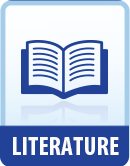|
This section contains 299 words (approx. 1 page at 400 words per page) |

|
Alliteration and Assonance
The poet uses a variety of poetic devices to create the effect he wants. In the first line, when the poet is fast asleep in bed, the assonance and alliteration, as well as the use of words of one syllable, create an effect that suggests a state of consciousness different from the normal waking state. The assonance is in the repetition of the "e" sounds in "sheath" and "sleep." These two words also show the use of alliteration, the repetition of initial consonants. The alliteration also occurs in the second part of the line, in "black" and "bed."
Onomatopoeia
In lines 3 and 4, "Comes a clatter / Comes a clatter," the alliteration and repetition create an onomatopoeic effect. (Onomatopoeia is the use of words that suggest their meaning by the sounds they make when spoken aloud.)
Simile
The poet also makes telling use of simile. A simile is...
|
This section contains 299 words (approx. 1 page at 400 words per page) |

|




